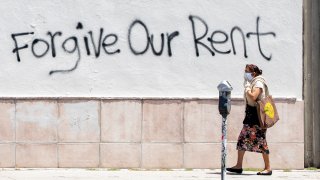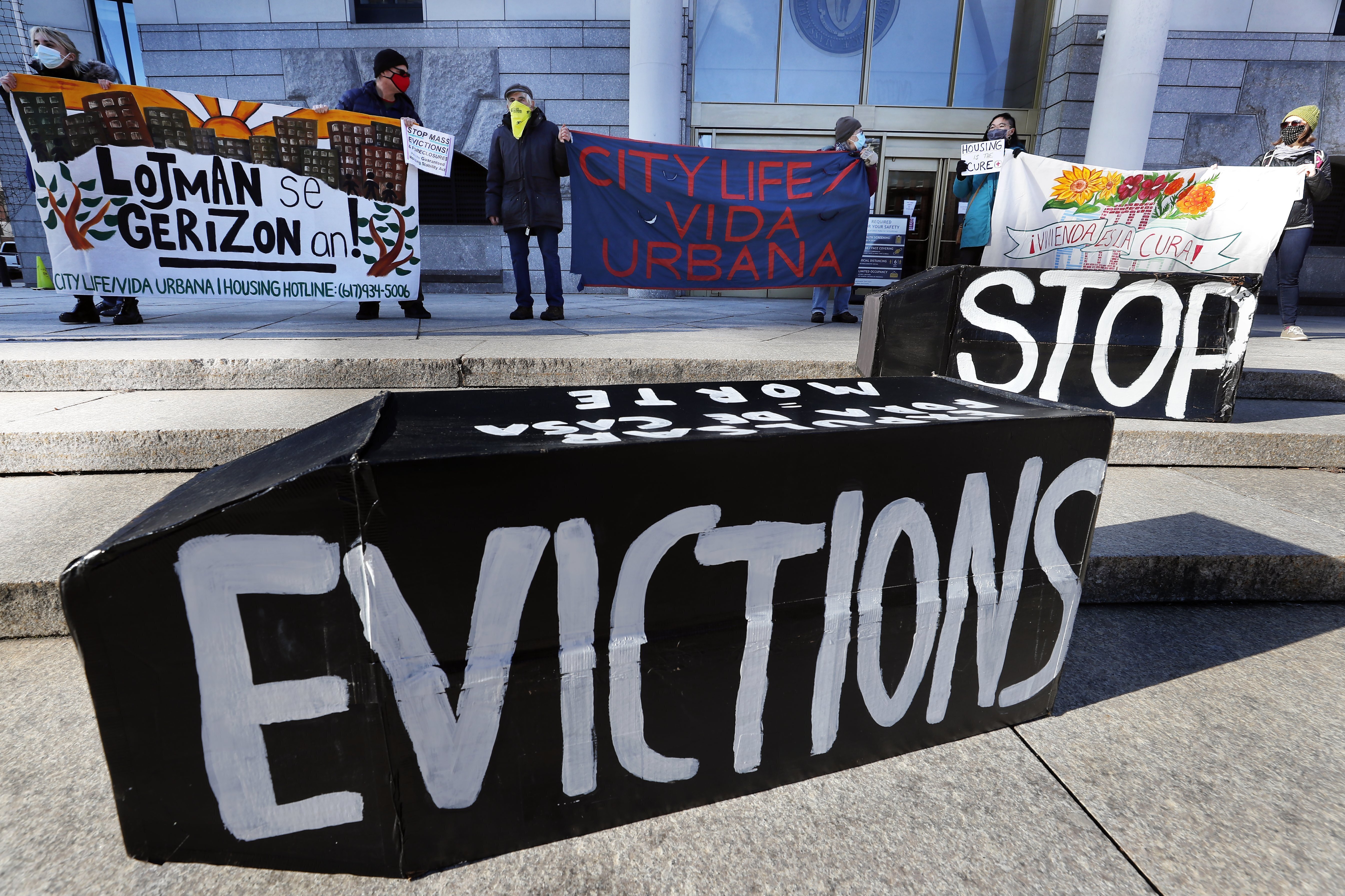
California's emergency rent relief program — $2.6 billion in total — is designed to help tenants pay for their housing and help the state avoid high levels of eviction statewide. The program is especially relevant as June 30, the expiration date for the state eviction moratorium, inches closer.
But according to a survey of people "conducting intake and outreach for state and local emergency rental assistance programs," released on Tuesday, many Californians face significant access issues in seeking rent relief.
That survey, conducted by the Bay Area Regional Health Inequities Initiative, Housing Now! and Policy Link, concludes that eviction moratorium and rent relief programs can help prevent the spread of COVID-19, as well as increase the general well-being of tenants who take part by alleviating stress.
But the effectiveness of those programs depends on people accessing them, and that access is limited by technological barriers, language barriers, issues obtaining documentation, other debts and fear of harassment, the survey states.
Get San Diego local news, weather forecasts, sports and lifestyle stories to your inbox. Sign up for NBC San Diego newsletters.
Those barriers also "disproportionately impact people of color, immigrants, and Native Americans," according to the survey.
The survey recommended that legislators and rental assistance program administrators take further actions to prevent evictions.
Those recommended actions included strengthening and extending eviction protections by:
- Extending eviction protections until the economy has fully rebounded for low-wage workers and the state has distributed available rental assistance funds.
- Prohibiting landlords from collecting from tenants unpaid rent that they can get through the rental assistance program.
- Protecting tenants from negative credit reporting that will deny them housing and credit in the future.
They also recommended removing barriers to rental assistance programs by:
- Getting rid of policies that disproportionately impact people of color, immigrants and Native Americans, such as written lease and other documentation requirements, and eligibility based on landlord participation and debt owed to the landlord.
- Investing deeply in community-based, linguistically-appropriate outreach and applications assistance, especially to reach those with low digital access.
- Encouraging prioritization of outreach and eligibility in neighborhoods with the highest rates of housing instability and COVID-19 impacts.
According to a report by CalMatters, the state pledged to fix some of those barrier issues. Russ Heimerich, spokesman for the California Business, Consumer Services and Housing Agency, said application websites in Chinese, Korean, Vietnamese and Tagalog will be available as soon as this week.
The CBCSH website has COVID-19 Rent Relief materials available in English, Spanish, Chinese, simplified Chinese, Vietnamese, Korean and Tagalog as of Friday morning.
The webpage with those materials is available in English and Spanish, with a Google Translate tab that allows users to translate some aspects of the website into other languages.
The website also lists a phone hotline that renters can call for assistance, 833-430-2122, with options in English, Spanish, Chinese, Vietnamese, Korean and Filipino. The hotline is available daily from 7 a.m. to 7 p.m.
Heimerich also told CalMatters that the state intends to issue a second, simpler rental relief application, one that would request less documentation of pandemic-related income losses and would take less time to fill out.
In the meantime, the CityServe organization offers assistance to landlords and tenants who want to apply for California COVID-19 Rent Relief Program funds.




